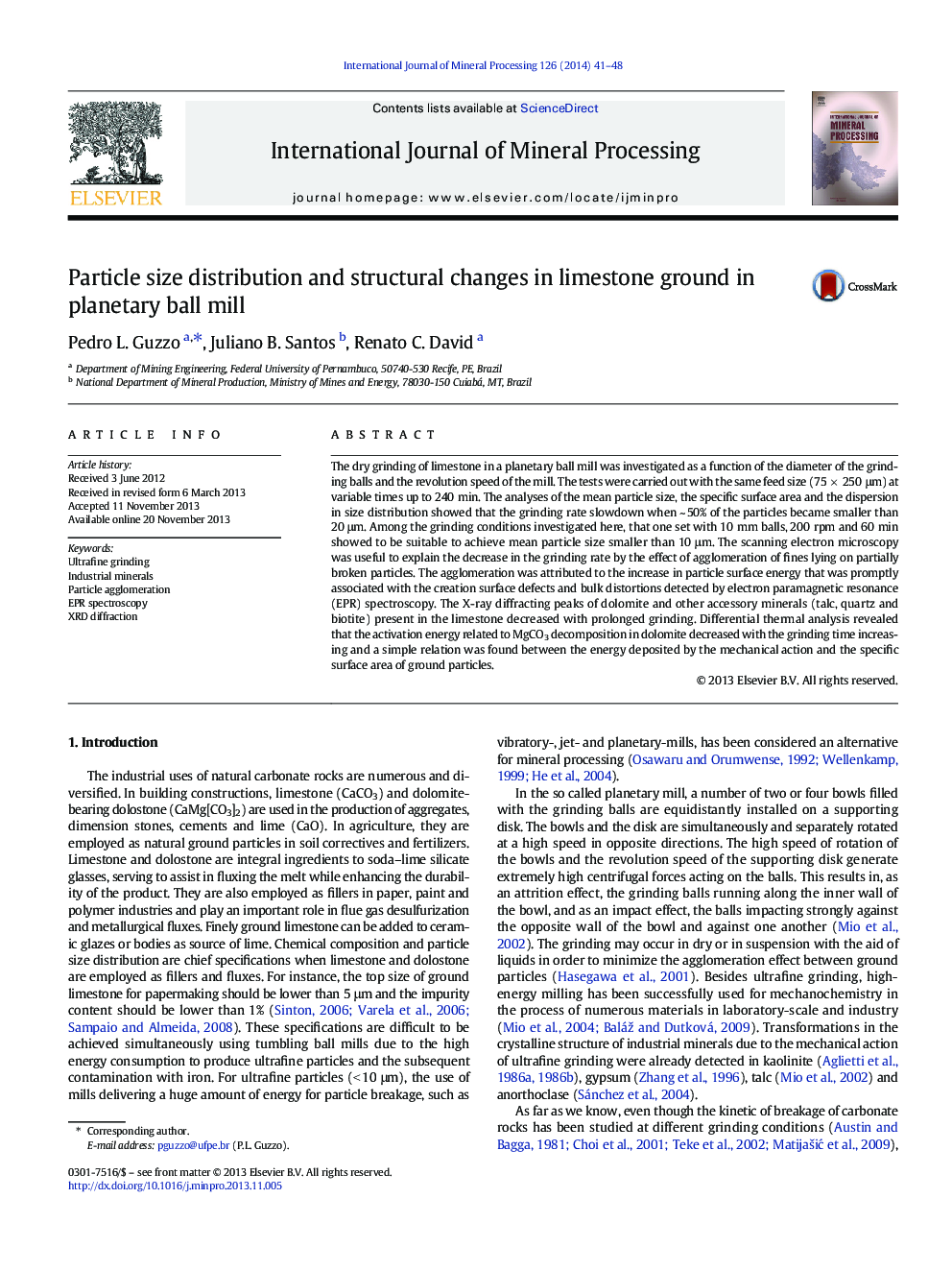| Article ID | Journal | Published Year | Pages | File Type |
|---|---|---|---|---|
| 214007 | International Journal of Mineral Processing | 2014 | 8 Pages |
•Grinding rate slowdown when 50% of the particles became smaller than 20 μm.•Grinding rate decreasing is due to agglomeration of fines and partially broken particles.•EPR spectroscopy revealed important changes in the structure of ground limestone.•The thermal decomposition of dolomite was affected by the grinding time.•The energy stored in ground particles of limestone was estimated by DTA.
The dry grinding of limestone in a planetary ball mill was investigated as a function of the diameter of the grinding balls and the revolution speed of the mill. The tests were carried out with the same feed size (75 × 250 μm) at variable times up to 240 min. The analyses of the mean particle size, the specific surface area and the dispersion in size distribution showed that the grinding rate slowdown when ~ 50% of the particles became smaller than 20 μm. Among the grinding conditions investigated here, that one set with 10 mm balls, 200 rpm and 60 min showed to be suitable to achieve mean particle size smaller than 10 μm. The scanning electron microscopy was useful to explain the decrease in the grinding rate by the effect of agglomeration of fines lying on partially broken particles. The agglomeration was attributed to the increase in particle surface energy that was promptly associated with the creation surface defects and bulk distortions detected by electron paramagnetic resonance (EPR) spectroscopy. The X-ray diffracting peaks of dolomite and other accessory minerals (talc, quartz and biotite) present in the limestone decreased with prolonged grinding. Differential thermal analysis revealed that the activation energy related to MgCO3 decomposition in dolomite decreased with the grinding time increasing and a simple relation was found between the energy deposited by the mechanical action and the specific surface area of ground particles.
